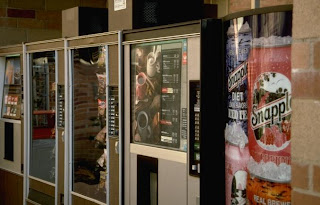 People have been brushing their teeth for thousands of years! In fact, the first “toothbrush” was created around 3000BC! Ancient civilizations used a thin twig with a frayed edge to rub against their teeth for cleaning.
People have been brushing their teeth for thousands of years! In fact, the first “toothbrush” was created around 3000BC! Ancient civilizations used a thin twig with a frayed edge to rub against their teeth for cleaning.The first toothbrush with bristles – similar to today’s toothbrushes – was invented in 1498 in China. Brushes were made out of bone or bamboo with bristles made from the hairs on the back of a hog’s neck.
It wasn’t until 1938 that the first nylon bristle toothbrush was introduced and people quickly became aware of practicing good oral hygiene.
Here are some other interesting facts about your toothbrush (and toothpaste):
• Most people are said to use blue toothbrushes over any other color
• The first toothpaste was used in 500 BC in China and India
• On average, children smile about 400 times per day
• Your toothbrush should be replaced every two months
• The first known toothpaste was used in 1780, Crest was introduced in the US in 1955 and Colgate in 1873



























 Separators are little rubber rings that may be placed between your teeth to push them apart so that orthodontic bands may be placed during your next appointment. The separators will be removed before we place the bands. To prevent separators from being removed prematurely, please avoid eating sticky foods and do not try to floss around them.
Separators are little rubber rings that may be placed between your teeth to push them apart so that orthodontic bands may be placed during your next appointment. The separators will be removed before we place the bands. To prevent separators from being removed prematurely, please avoid eating sticky foods and do not try to floss around them. The palatal expander (widens) the upper jaw by putting gentle pressure on the upper molars each time an adjustment is made. Dr. Brodsky and his staff will instruct their patients how to adjust the expander.
The palatal expander (widens) the upper jaw by putting gentle pressure on the upper molars each time an adjustment is made. Dr. Brodsky and his staff will instruct their patients how to adjust the expander.





